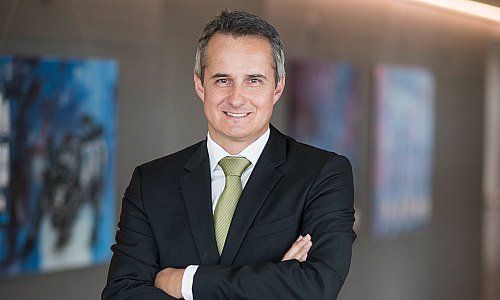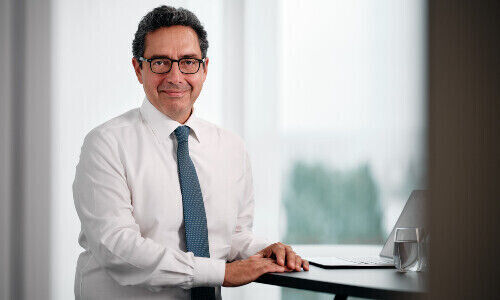GAM asset management has cut the last ties to former owners Julius Baer. Daniel Durrer, head of distribution in Europe, in an interview with finews.com explains what the rebranding exercise means for GAM.
Daniel Durrer, GAM has included all its products under its brand name following the renaming of what used to be Julius Baer funds. What do you expect to come out of this exercise?
GAM has sold funds both under the brand name of GAM and Julius Baer (JB) ever since the split-off from Julius Baer private bank. As an independent asset manager, it is especially important to GAM to clearly position its own brand. With the rebranding of our JB funds which we completed at the beginning of July, we have taken the final step in that direction. From now on, wherever there is GAM inside, it will also be called GAM.
Could you provide us with a magnitude of the volume that was affected by the rebranding exercise?
At the end of 2016, we had about 24 billion Swiss francs in funds with the Julius Baer brand name. Today, all funds managed by GAM carry the GAM brand. This will create more transparency for investors. However, there are no changes affecting the funds apart from the rebranding. The managers, strategies and investment procedures all remain the same.
Did you close any funds as a consequence of the rebranding?
Optimizing our product portfolio is a steady process. Funds are merged or closed. The decisions are taken based upon clearly defined criteria in respect to performance, size and market potential. There were no closures of funds as a direct consequence of the rebranding.
Do you expect outflows of money?
We don’t expect the brand change to have a material effect on money flows. The unchanged investment strategies and track records provide a sense of continuity for our customers.
GAM has to expand its distribution network. What is the current situation?
This year, we have opened two new distribution branches in Paris and Vienna. Austria and France are two markets where GAM already had a good investor base, but with the new offices, we want to further strengthen our presence.
«We are in a comfortable position in as much as we have a broadly diversified offering»
In our industry – and in particular during the currently dominating and challenging low-rate environment, where clients are actively looking for investment solutions and alternatives – it is especially important to be close to your customer. After all, asset management is a people’s business.
What was the development like in the first half of the year?
Many of our strategies had a pleasing performance this year. There will be more detailed information about our business at the presentation of our half-year results on August 3.
How are you performing given the trend toward passive investment strategies?
As an active asset manager we are asked to make the most out of the assets of our clients, independent of the structure of the relevant benchmark and indexes. Under certain market conditions, it will be easier with some strategies than with others. We are in a comfortable position in as much as we have a broadly diversified offering of fixed-income, specialized equity strategies and alternative products with discretionary and systematic investment models.
Which of your active strategies are most in demand by institutional investors in the current market environment?
Apart from traditional share products, we see a keen interest in our broad portfolio of emerging market bonds as well as our specialized funds for subordinated bonds, cat bonds and mortgage based securities.
«The readiness to take a risk strongly depends on the strategic positioning of an investor»
Alternative investments also are in stronger demand, for instance merger arbitrage and GAM systematic platform with the two UCITS products for diversified macro and market neutral stock strategies, and our established alternative risk premia product.
If you want to achieve a return in an environment of low interest rates, active strategies require a higher risk tolerance. Are your customers happy to take more risks?
It depends on the client, because the readiness to take a risk strongly depends on the strategic positioning of an investor in the current market environment. At the same time, institutional investors need to ensure that they can fulfill their obligations and generate the required profits. And incidentally, the inclusion of a specialized bond fund (as mentioned above) doesn’t need to mean a higher risk profile, because many of the applied instruments depend only a little or not at all on the general level of interest rates and risk premiums and therefore are perfectly suited for the purpose of portfolio diversification.
What other products do you have in the pipeline at GAM?
At GAM, we always reevaluate the status quo and consider which investment solutions fit best our customers. The best example for this for sure is our systematic platform, which is the innovation center for the development of new technologies and the concepts of systematic strategies. The product portfolio of GAM Systematic over time will include products based on the principles of systematic investment as well as alternative and long-only investment strategies.
Daniel Durrer is head of distribution for continental Europe at GAM, responsible for the institutional as well as the funds business. He’s been with GAM for more than 14 years and has been through all the changes that the company has seen in the past years. GAM belonged to UBS from 1999 through 2005, before being sold to Julius Baer. The bank in 2009 split off the asset management division at listed GAM on the stock exchange.


































